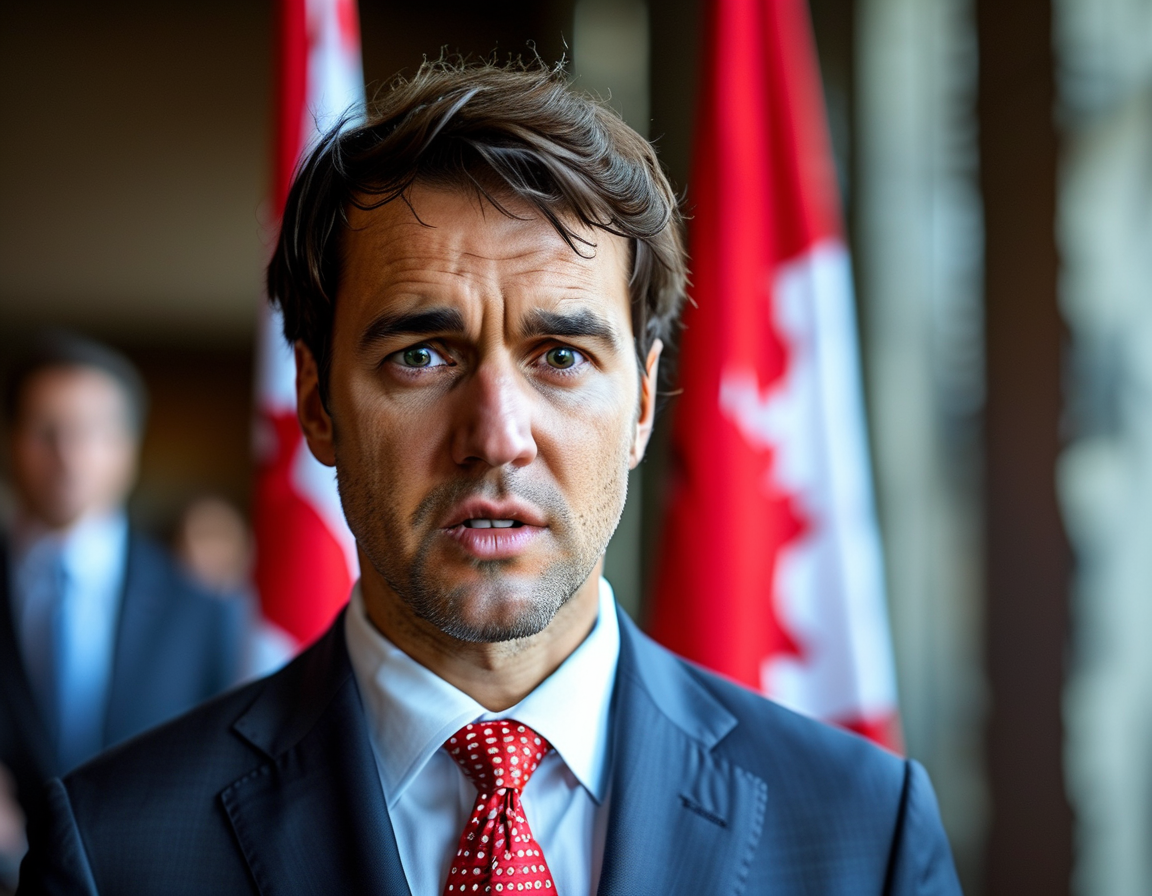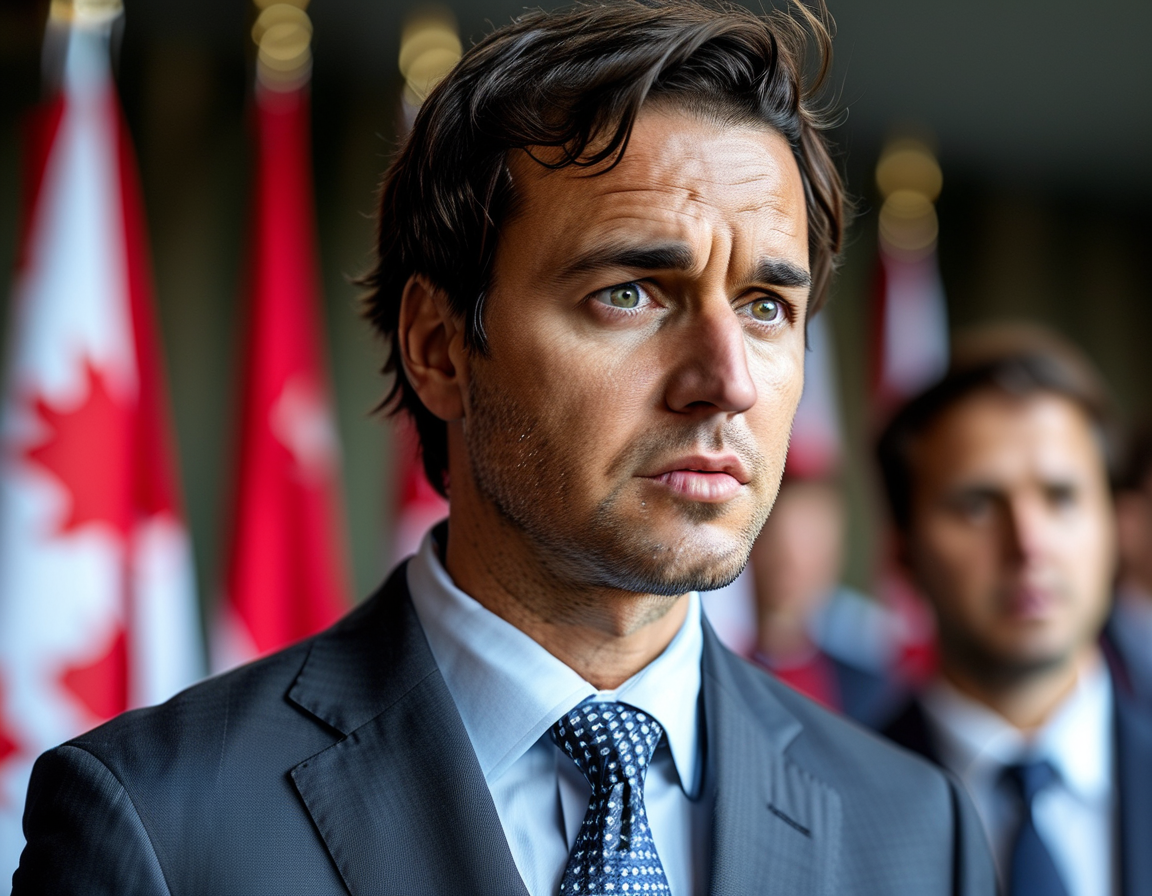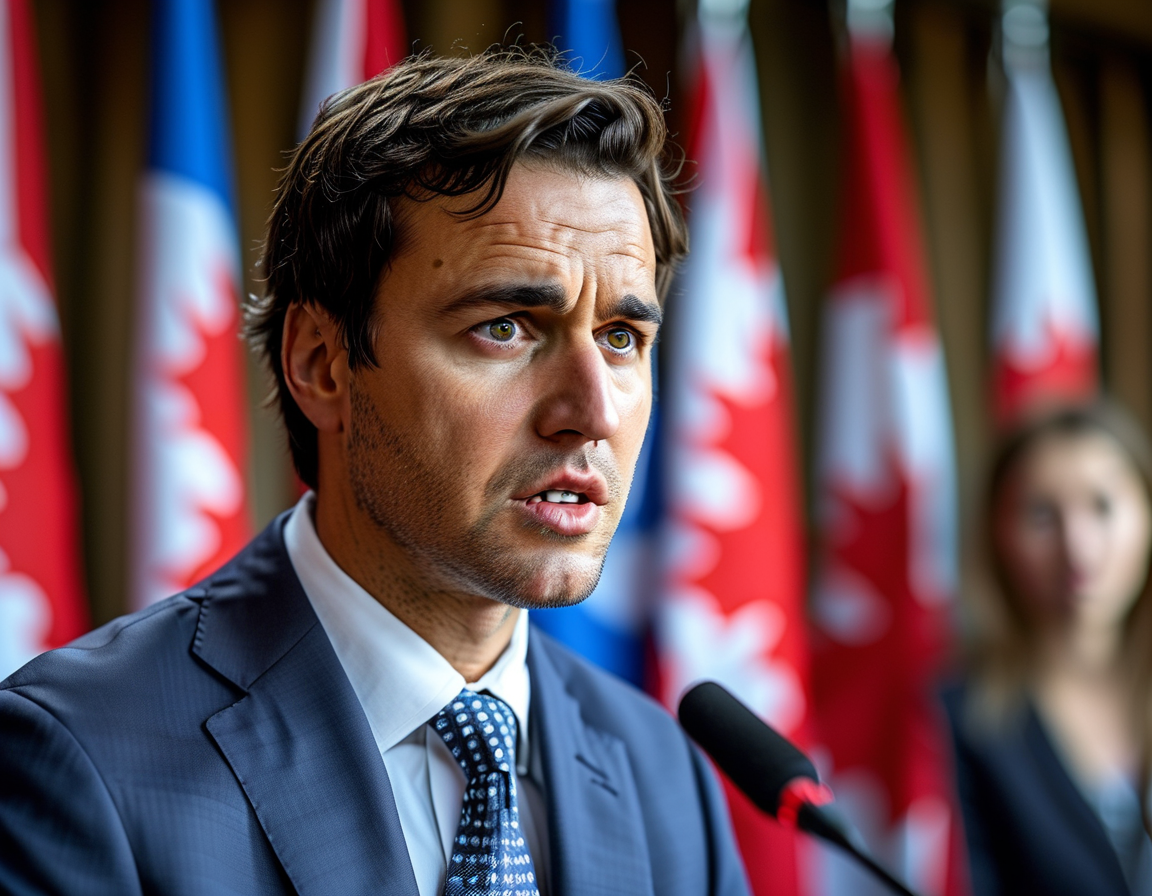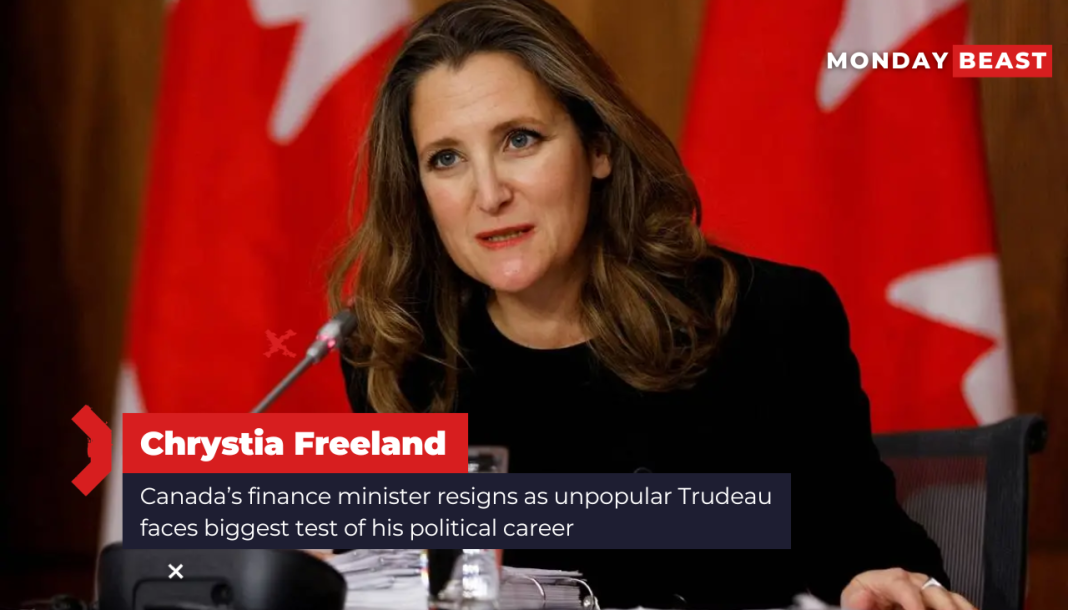Trudeau faces turmoil after Freeland’s resignation.
Finance Minister Chrystia Freeland’s sudden exit raises eyebrows. For nearly a decade, she was a loyal ally. Now, her departure leaves Canada’s Prime Minister in a tough spot.

Can he keep control?
Trudeau, long under fire for rising inflation and immigration issues, must prove his leadership. With Trudeau’s popularity dipping, many question if he can navigate this storm.
After meeting with reporters, Dominic LeBlanc was named as her replacement. This change signifies a shift in strategy. LeBlanc’s focus? Addressing the cost of living.

In a cabinet reshuffle, Trudeau hopes to calm dissent. Yet, challenges lurk on the horizon.
Jagmeet Singh, leader of the NDP, has made it clear—he wants Trudeau to resign.
Singh’s stance amplifies pressure on Trudeau. The opposition’s demands for elections create uncertainty. What options does Trudeau truly have?

Freeland’s resignation letter highlights tension between her and Trudeau. They disagreed on crucial fiscal policies. She warned against “costly political gimmicks,” raising concerns about proposed sales tax holidays.
Her insistence on maintaining fiscal responsibility speaks volumes. In a time of potential tariffs from the U.S., prudent financial decisions become paramount.
It seems Trudeau underestimated the weight of her wisdom. With widening deficits looming, will he make the right choice?
The dynamics shift with Trudeau’s administration relying on NDP support. A parliamentary break may delay immediate action. Still, cracks in the coalition are evident.
Freeland’s departure marks a significant political event. Her ascent marked her as a potential successor. What does this mean for the future of the Liberal Party?
Meanwhile, Trudeau reveals his desire to remain as party leader. Yet, whispers of dissent echo within party ranks. Some members yearn for change.
Long-term stability now feels tenuous. The legacy of recent elections raises questions. Can Trudeau emulate his father’s success in an increasingly fractured political landscape?
Pundits suggest a lack of unity could spell trouble. LeBlanc’s commitment to border issues might resonate well with Trump. But will this appease all factions within?
The stakes are high for Trudeau’s administration. Amid rising public dissatisfaction, time is of the essence. Is there a viable path forward for him?
As Canada navigates post-pandemic challenges, the narrative grows complex. Leaders face scrutiny as citizens demand transparency and effective governance. Are they prepared to meet these demands head-on?
With economic predictions foreshadowing trouble, Trudeau’s leadership is in doubt. Public trust is fragile. Can he restore confidence among Canadians or will the political landscape shift further?
Freeland’s warnings about fiscal prudence should resonate. But faced with immediate political tactics, will Trudeau heed her advice? His legacy hangs in the balance.
Trudeau’s administration now reveals its vulnerabilities. Fissures within the coalition serve as a stark reminder of shifting allegiances. Which way will this political storm blow next?
In closing, the past week has revealed just how precarious Canadian politics can be. With internal dissent and external pressures mounting, Canada stands at a crossroads. The outcome of this saga has the potential to alter the nation’s political trajectory significantly.




